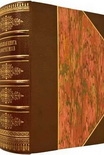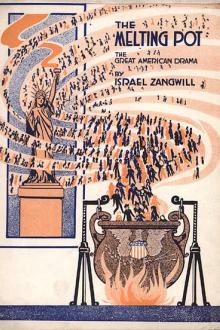No Modernism Without Lesbians, Diana Souhami [love books to read txt] 📗

- Author: Diana Souhami
Book online «No Modernism Without Lesbians, Diana Souhami [love books to read txt] 📗». Author Diana Souhami
Janet Flanner © Bridgeman Art Library
In Paris, they wanted to live together openly, ‘begin anew’. Like-minded lesbians were already in the city: Sylvia Beach, Gertrude Stein, Natalie, Djuna Barnes. ‘I wanted Beauty with a capital B,’ Janet Flanner said. They rented rooms on the fourth floor of the Hôtel Saint-Germain-des-Prés at 36 rue Bonaparte in the 6th arrondissement for a dollar a day including heating. The charms of the place, Solita said, were not in its amenities. They rose at eight, had brioche and coffee for breakfast, ate lunch in a nearby bistro, La Quatrième République, wrote in the afternoons and early evenings, then met with Natalie Barney, Sylvia Beach and the ‘accents we hoped to leave behind’. Twice a week they took French lessons. Janet wrote an autobiographical novel, The Cubical City, lesbian poetry in the style of Sappho and articles for newspapers and magazines. In 1925 she became Genêt of The New Yorker with her fortnightly ‘Letter from Paris’.
She compared Dolly to someone from a novel:
On the street, walking, or at a Paris restaurant talking… she seemed like someone one had become familiar with by reading, rather than by knowing.
Dolly had, she said, ‘a floral quality which was the bloom of her charm’. This charm was enhanced by Dolly’s drug habit. After shooting up heroin or snorting cocaine, she ‘scintillated with epigrams’ that no one could remember. She mixed with the Jean Cocteau set and scored her drugs from the marchands de paradis in the restaurants and bars off the Champs Élysées. Her father, like Natalie’s, had been alcoholic.
the rat was Dolly
Within weeks of beginning a relationship with Natalie, Dolly wrote of feeling tortured, of ‘struggling to get her hand out of the trap’. Her letters were desperate:
Do you love me? I wonder! Not that it matters at all. Perhaps I shan’t even mind when you leave me – only then there could be no love making – impossible thought… Who will flee first? Just now I am too in love with you to dream of change… Did you know that it was nearly four o’clock when I left you last night? I ache with tiredness and darling I am bruised. Toujours. D
Once again, Natalie had started up a ‘liaison’ with a self-destructive young woman who was provoked by her infidelity and composure. Dolly beseeched Natalie not to leave her, not to stop loving her. ‘You overshadowed me like a great mountain that at once uplifted me and awed me.’
Her love for Natalie, she wrote, ‘shattered the fortress’ of her self-sufficiency:
You have held so many hands, so many waists, written so many love letters.
Always wonderful Natalie, I miss you every night with fierce discomfort…
Darling Natalie, don’t shake me off. Don’t stop loving me. You are the only serious thing in my life emotionally.
Natalie stored these letters in a wooden box. Dolly was not the only serious thing in her life emotionally. Always present were Romaine, Lily de Gramont, the marriage contract in a drawer, the liaisons and affairs.
In 1933 Romaine gave Natalie a warning. She said she had ‘suffered it to pass’ as merely unpleasant while Natalie had ‘a not unfriendly tribe of second-rate young women’, but Dolly Wilde was too much. Romaine called Natalie weak and governed by vanity. ‘Your life at present is infested by rats, & one of these rats is gnawing at the very foundation of our friendship.’
That rat was Dolly. Unless Natalie got rid of her, she would leave. ‘R might as well insist on your killing me as not to see you’ was Dolly’s response when Natalie told her of this.
Dolly was a liaison, and Natalie was not going to sacrifice a relationship for her. As with Renée Vivien, heroin and drug addiction dictated Dolly’s demise. She tried cures, detoxifications, psychoanalysis, but always lapsed. She several times overdosed and slashed her wrists in suicide attempts. Natalie sent silk pyjamas and money. ‘Romaine and Lily are the only people you give spiritually to… to the others you give material gifts,’ Dolly told her.
In 1938, when she was forty-three, Dolly was diagnosed with breast cancer. She refused surgery. On 21 July 1939 the manager of the Hôtel Montalembert in Paris wrote to Natalie:
I am told by friends of Miss Wilde that you are the person with the most influence over her. She is drinking so much that delirium tremens will follow and probably suicide. Also she emits piercing cries all night, alternating with groans which disturb her neighbours. I would be infinitely grateful if you could remove her to a sanatorium.
Dolly killed herself the following April with heroin and paraldehyde in a rented room in London. Ten years after her death, Natalie paid privately to publish In Memory of Dorothy Ierne Wilde: Oscaria. Printed by Darantiere Press, on the frontispiece was a photo of Dolly dressed as Oscar. It was an anthology of tributes: Janet Flanner called Dolly ‘utterly singular and unique’. She had, she said, ‘as many versions of herself, all as slightly different, as could have been seen in views of her supplied by a room lined with mirrors.’ Gertrude Stein said, ‘Well she certainly hadn’t a fair run for her money.’ Lily de Gramont wrote of her Irish beauty and social gift and ‘extraordinary verbal gift inherited from her famous uncle’. She died, she said, ‘encore jeune, encore belle, encore avide’ – still young, still beautiful, still eager. Natalie





Comments (0)